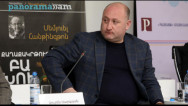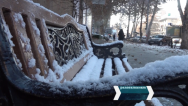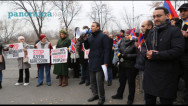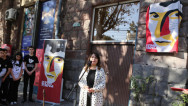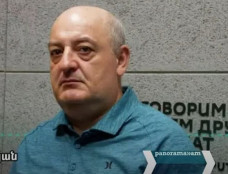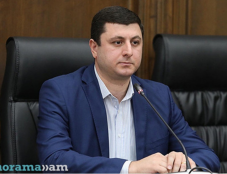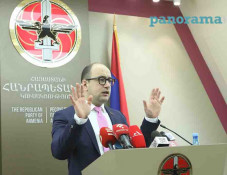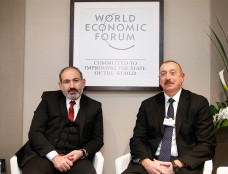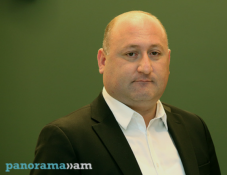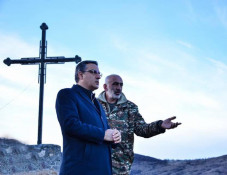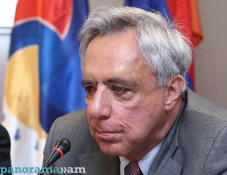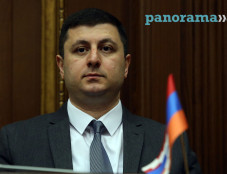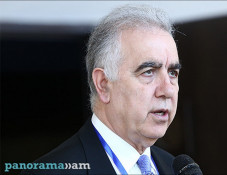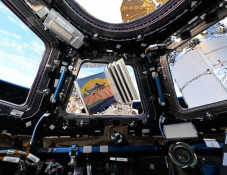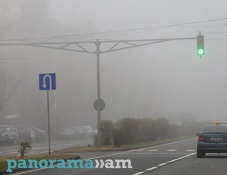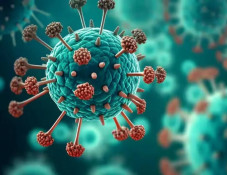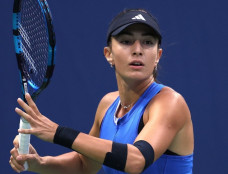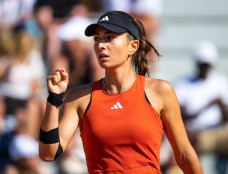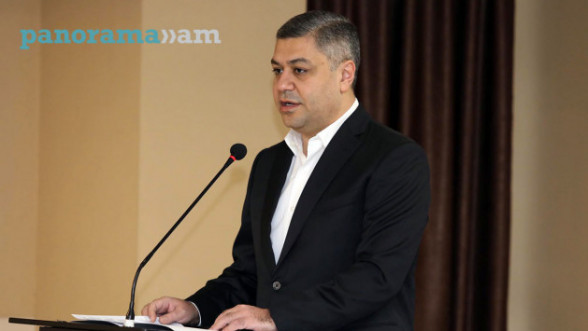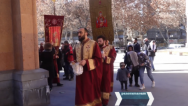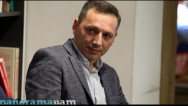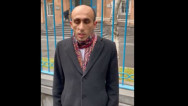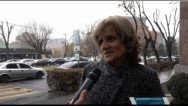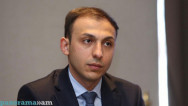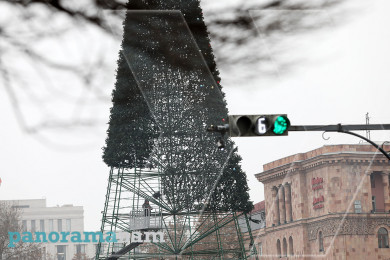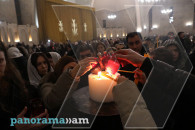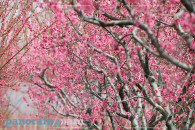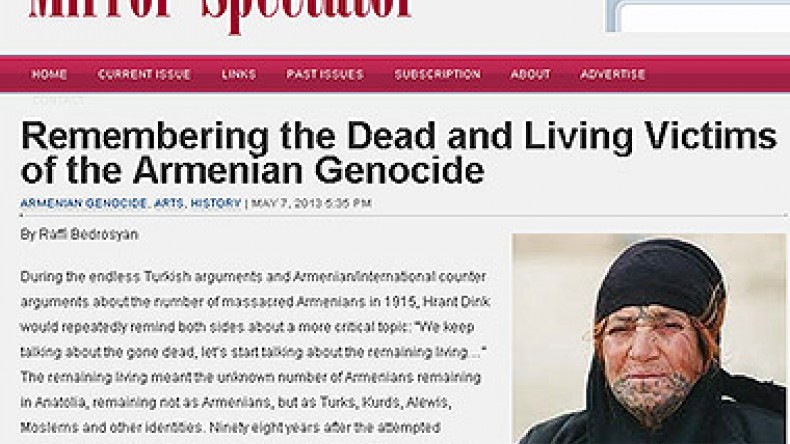
The Armenian Mirror-Spectator: Armenian orphans became a source of enriching genetic pool for Turkish nation
Below, we present an article by Raffi Bedrosyan published in The Armenian Mirror-Spectator.
During the endless Turkish arguments and Armenian/international counter arguments about the number of massacred Armenians in 1915, Hrant Dink would repeatedly remind both sides about a more critical topic: “We keep talking about the gone dead, let’s start talking about the remaining living…” The remaining living meant the unknown number of Armenians remaining in Anatolia, remaining not as Armenians, but as Turks, Kurds, Alewis, Moslems and other identities. Ninety eight years after the attempted destruction of a nation, it is time to talk more about the hidden Armenians, mostly orphans of 1915 assimilated into identities other than their own Armenianness.
Hrant had the courage to reveal the real identity of one of the best-known Turkish heroes as an Armenian orphan. Sabiha Gokçen, the first female military pilot and Ataturk’s adopted daughter, was in reality Hatun Sebilciyan, an Armenian girl orphaned in Bursa in 1915. This revelation was the beginning of the end for Hrant, triggering a massive hate and threat campaign against him by the government, the military and the media, resulting in his assassination three years later. But Sebilciyan/Gokçen was only one of tens of thousands of Armenian girls and boys torn away from their parents during the 1915 events. What happened to these orphans? How many were there? This article will cite some examples from different parts of Anatolia.
It is a well-documented fact that during the deportation of the Armenian population from all corners of Anatolia to the Syrian desert, as the convoys approached their towns or villages, local Turks and Kurds snatched Armenian children from their parents to take them home as servants or wives. Many children were sold as slaves by them or the gendarmes escorting the convoys. There were also a few children entrusted by their parents to Kurdish and Turkish neighbors before starting on the deportation route. There were some children initially rescued by European/American missionaries or Pontian Greek religious leaders, but inevitably they were also later seized and sent away or murdered. We can cite one of many documented tragic incidents in Trabzon, where 600 Armenian orphan children were taken to the Greek monastery with the government’s permission after their parents were massacred by drowning in the Black Sea. But after three months, by the order of the Trabzon governor Djemal Azmi, the police forcefully removed the orphans from the monastery and handed them over to a Turkish boat captain, Rahman Bayraktaroglu, who placed each child in a flour sack, securely tied the top and dropped each into the Black Sea. It is documented that Governor Jemal later joked, “The harvest of smelt (hamsi) will be plentiful this season with all the drowned as fish feed.”
Trabzon Governor Djemal Azmi selected about 450 of the best-looking girls from the Armenian community of Trabzon and converted the local Red Crescent Hospital to a whorehouse for the Turkish elite and visiting dignitaries, even sending some of the girls as treats to his superiors in Istanbul. The supply of the orphans got replenished as needed. He kept a supply of 15 Armenian girls for himself but also gave one to his 14-year-old son, Ekmel, as a present. Most of the girls were forcefully Islamicized; a few eventually escaped or committed suicide. These experiences came to light from witnesses during the trials of the Ittihat ve Terakki leaders after the war, but also were told in 1921 by Djemal Azmi’s son himself to his close friend, known to him as Mehmet Ali. The friend, however, happened to be an Armenian named Hratch Papazian, disguised and even circumcised as a Moslem, who had succeeded infiltrating the Ittihad ve Terakki circles hiding in Berlin, in preparation for assassinating the Turkish leaders as part of Operation Nemesis (Djemal Azmi and Bahattin Shakir, head of the Special Organization [Teskilat-i Mahsusa] who was the chief organizer of the deportation massacres, were both assassinated in Berlin on April 17, 1922, right in front of the bewildered widow of Talat Pasha, a year after Talat himself was brought to justice).
The Ittihat ve Terakki government had special plans for the surviving orphans. In an organized operation, while there was a world war going on, most of the surviving orphans were rounded up and sent to orphanages set up in multiple locations, with the objective of converting them to Islam and to be assimilated as Turks. One of these special Turkification orphanages was in Ayn Tura, near Zouk, an hour’s drive from Beirut, where 1,000 Armenian orphans were kept, between the ages of 3 to 15. By the orders of Djemal Pasha, governor of Syria and Lebanon, and under the supervision of Turkish intellectuals and teachers, including the newly-appointed principal, Turkish novelist Halide Edip Adivar, these orphans were converted to Islam and Turkified. The boys were circumcised, and were given Turkish names, but preserving the initials of their Armenian names and surnames, so that Haroutiun Najarian became Hamid Nazim, Boghos Merdanian became Bekim Muhammed, Sarkis Sarafian became Saffet Suleyman. The orphanage was converted from a Christian school after expelling the Lazarist Catholic priests. While famine prevailed everywhere in Lebanon and Syria during the war, abundant food was provided to the orphanage, with the objective of raising well-fed and healthy newly Turkified children. Based on the memoirs of one of the orphans, Harutiun Alboyajian, the children were expected to speak Turkish only; if the supervisors heard any Armenian spoken, the boys would be beaten severely. They were dressed as Turkish children and were taught Islam. It was Djemal Pasha’s firm belief that the Armenians had superior intellect and capabilities, which would help the Turkish nation immensely. Despite efforts to keep the orphanage sanitary, about 300 Armenian orphans died from leprosy and other diseases until 1918. Some of the orphans were placed with families in towns where there were no Armenians left, and some were distributed to other orphanages. At the end of the war, when Near East Relief took over the orphanage, there were 670 orphans, 470 boys and 200 girls, who still remembered their Armenian names.
Another example of Turkification experiment was in Eastern Anatolia, successfully implemented by Eastern Front commander Kazim Karabekir. He estimated that there were about 50,000 desperate orphans after the war in his regional area of operations. It is documented that about 30,000 of them were circumcised and Turkified. He rounded up about 6,000 Armenian children in Erzurum, 2,000 girls and 4,000 boys, and placed them in an army camp. Some were given training similar to a military school; others were taught trades essential for army supplies such as sewing and boot-making. These orphans had become completely Turkified and named “The Healthy Children Army.” The talented ones among these boys were later sent to higher military academies in Bursa and Istanbul. Without going into the psychology of the assimilations and conversions, it is alleged that these converted military officers became the most fanatical ultranationalists in the Turkish army, with some of them participating in the May 1960 military coup which toppled the civilian government of Adnan Menderes.
Apart from the orphanages, tens of thousands of young girls and boys became slaves after 1915, bought and sold in bazaars and markets. Although slavery was officially abolished in the Ottoman Empire in 1909, slavery markets re-opened after 1915 in order to trade Armenian women and children. Kidnapping Armenian children from the deportation convoys not only supplied the Turks and Kurds with servants, free labor or sex objects in their own homes, but also a marketable commodity that could be sold for profit in these markets. The markets were set up in Aleppo, Diyarbakir, Cizre, Urfa and Mardin. It is reported that the Mardin market had the lowest prices. After being branded and tattooed as a slave, Armenian children aged 5-7 found buyers for 20 cents, similar to the price of a lamb. Girls or boys aged 14-15 went for 50 cents, whereas an adult Christian woman was worth about one Turkish lira. But if the slave came from a well-known wealthy family, the price went up significantly, as owning the slave could also bring the future potential of claiming the wealth of the slave’s family. There are several documented cases from the later Turkish Republic era when Kurdish and Turkish families attempted to legalize the ownership of many real estate properties, previously owned by their “wives” or “daughters.”
There are also documented cases when kind-hearted Assyrian priests or European/American missionaries purchased several Armenian children from these markets, with the objective of rescuing them. Assyrian Archbishop Tappuni of Mardin purchased and saved nearly 2,000 Armenian children in 1916. While some Moslems treated the Armenian slaves humanely, most owners savagely beat them, as they believed “Christians only deserve beatings.” The women and girls ended up being second wives for the Moslem owners, who received harsh treatment not only from their husbands but also from the other wives of their husbands. But eventually, they all got absorbed into the Moslem households, bearing children, learning the Quran, praying piously as Moslem women.
According to a post-war report of the League of Nations Rescue Commission for Armenian Women and Children, at least 30,000 Armenian girls were sold in the markets to be placed in harems, or to be used as slave labor. Documented histories of some 2,000 Armenian girls, boys and young women rescued from Turkish and Kurdish households after the war are archived in the League of Nations offices in Geneva. Rescuing the Armenian orphans became one of the first tasks of the League of Nations after the armistice in 1918. Following the pleas of the Istanbul Armenian Patriarchate, the Allied Forces and the League of Nations representatives organized the transfer of most Armenian orphans from Anatolia and Syria to Istanbul, and started searches of Armenian orphans in Moslem homes. As there was no room to place all the orphans in existing orphanages in Istanbul, several schools were used to house the Armenian children, including the French Notre Dame de Sion, St. Joseph, the Italian school, the Russian monastery, and Turkish Kuleli Military Academy.
As some of the orphans already had Turkish names, there started heated discussions between the Armenian Patriarchate and the government authorities as to the real identity of the children. In fact, some of the orphans were already transferred to Turkish homes in Istanbul as maids and servants; among them, 50 orphans sent to the farm of Ittihad ve Terakki leader Enver Pasha. The children were conditioned and intimidated not to speak Armenian, nor to reveal their Armenian identities during the war years.
Documents show that between 1920 and 1922, there were about 3,800 Armenian children brought to Istanbul, 3,000 sent to Cyprus, 15,600 taken to Greece, and 12,000 transferred to Syria from Marash, Urfa, Antep, Malatya and Harput. Significantly, the Istanbul Patriarchate records indicated that there were still at least 63,000 Armenian orphans documented as “Not Rescued” in Turkish and Kurdish households.
In recent years, genocide scholars have stated that the perpetrators not only aim at the “destruction” of the oppressed group but also the “construction” of the oppressor group. The 1915 events and the consequences clearly show that the Armenian orphans became a source of pro-creation for the Turkish nation by enriching their genetic pool. There are now tens of thousands of Turkish and Kurdish families, with a hidden Armenian grandmother. It is remarkable that, even ninety eight years after attempts of forced Turkification, assimilation and conversion, there are signs of hidden Armenian identity in various places in Anatolia starting to emerge. There is a somewhat graphic term defining these people in Turkey, “remnants of the sword” (kilic artigi).
Hrant Dink’s lawyer, Fethiye Cetin, in her book My Grandmother, and the follow-up, The Grandchildren, co-written with Aysegul Altinay, and many other books, documentaries and movies have come out in recent years, describing the existence and emergence of the hidden Armenians in Turkey, carried from one generation to the next, all originating from the 1915 Armenian orphans.
It is of course very difficult to estimate the number of hidden Armenians in Turkey today. One can assume that perhaps up to 100,000 Armenian orphans survived but got Turkified, converted and assimilated. Scholars estimate another 200,000 adult Armenians avoided deportation in various Anatolian villages by converting to Islam. It is therefore conceivable that 300,000 Armenian souls survived the 1915 events. The population of Turkey increased seven fold since then. Using the same multiple, one can extrapolate that there may exist 2 million people with Armenian roots in Turkey today.
I would like to share one of my own personal experiences with a hidden Armenian, albeit indirectly. When I was in Armenia in 1995 as a voluntary engineer inspecting Hayastan All Armenian Fund-financed construction projects, I also visited Spitak where the church destroyed in the 1989 earthquake was being rebuilt. I was informed that the financing came from Turkey from a still confidential donor, as specified in the will of a grandmother of a very wealthy Turkish family, who had only revealed her Armenian roots at her deathbed. In recent years and especially after the reconstruction of the Surp Giragos Armenian Church in Diyarbakir, there has been a resurgence of the hidden Armenians in revealing their identities. It is hoped that the Turkish government sees this as a positive consequence of the recent steps of liberalization and not as a threat, and eventually finds the courage to face its past.
Newsfeed
Videos
